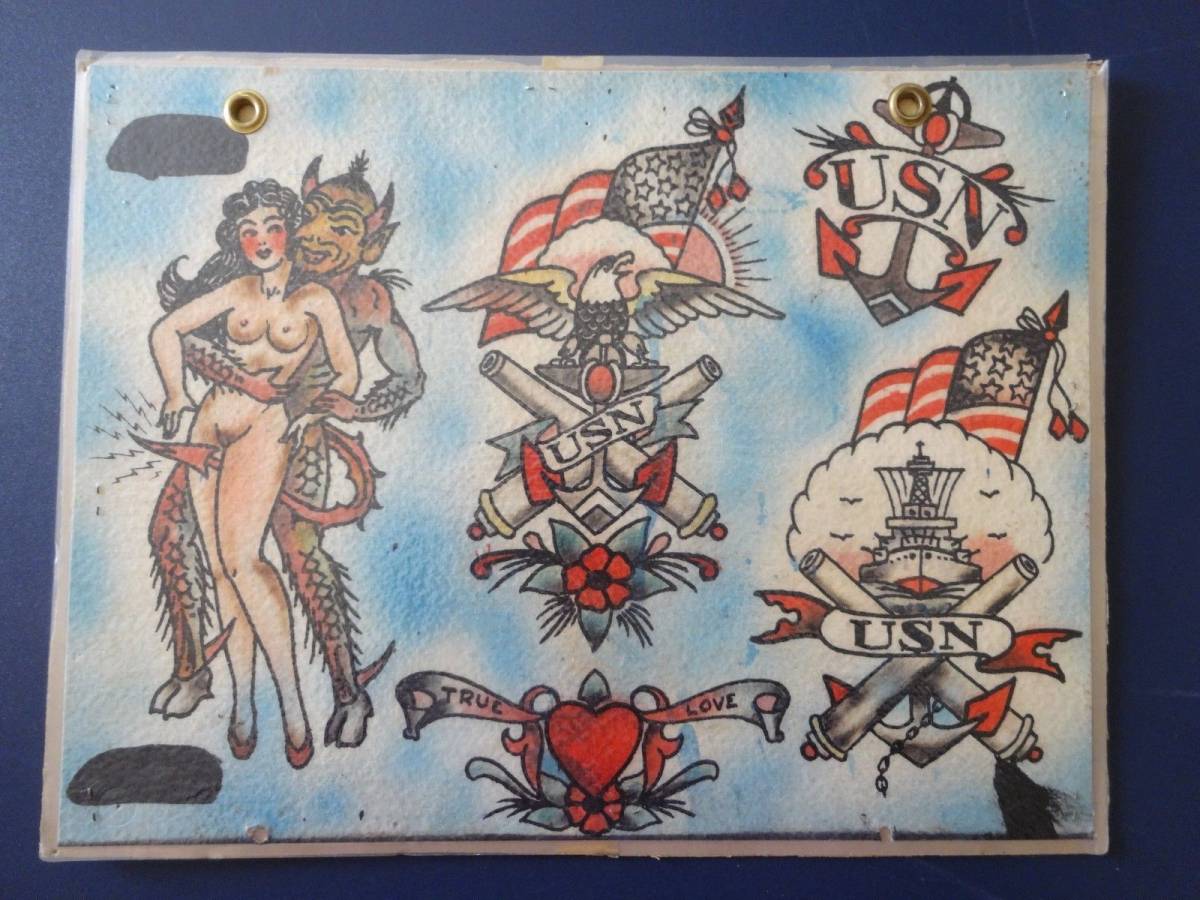1911-1973
Traveled as a merchant seaman and worked in shipyards.
Tattooed in Chicago
Moved to Honolulu in the 1930’s
Sailor Jerry did some of the best tattooing of his generation. Urban legend sways many today think he invented the old school design aesthetic. The truth is he was continuing a tradition, and represented the style’s pinnacle rather than its beginnings. He didn’t invent the designs but refined them and drew them better than anyone else. He was the conclusion of a style and even lived to witness the roots of a modern shift that would morph into the “new school” movement, yet at the time it didn’t yet have a name.
Aug, 1972. “…These young people want far out stuff, and we are trying to sell them anchors… …you know how the kids are all going for that sloppy cartoon shit of the monsters and the far out cars, it’s an untapped market that is just waiting to be bled and embalmed.”
He was a traditional tattoo artist yet none the less an innovator. Beyond the classic tattoo style of American and British past, he pushed to incorporate the Japanese style, and in doing so, heavily influenced Don Ed Hardy. Japanese tattooing had already had a significant influence in the west ever since Hori Chiyo tattooed western travelers in the 1880’s, and its influence was felt on artist going back to Gus Wagner, but Sailor Jerry took it to a new level. Not just co-opting an image idea, but treating the entire body as the canvas, making a cohesive work of art. Jerry would study the designs, and also the meanings and symbolism. He would regularly correspond with Pink Yun and other eastern artists. Sailor Jerry pushed the boundaries of tattooing, and did so not only with aesthetic innovation, but also the technical innovation which would enable him to complete the task. He built his own tattoo machines, and even his own power supplies. He mixed his own inks and claims to be the first to discover a workable purple among other colors. He also experimented with new needle making techniques and gave birth to the mag. To this day, castings of his Bulldog machine are still manufactured and sold.
Springs
Page 148, Aug,1972. “Made machine using .015 x 3/4″ [spring] in back and single .015 x 3/8” tapered to 5/32 in front.
